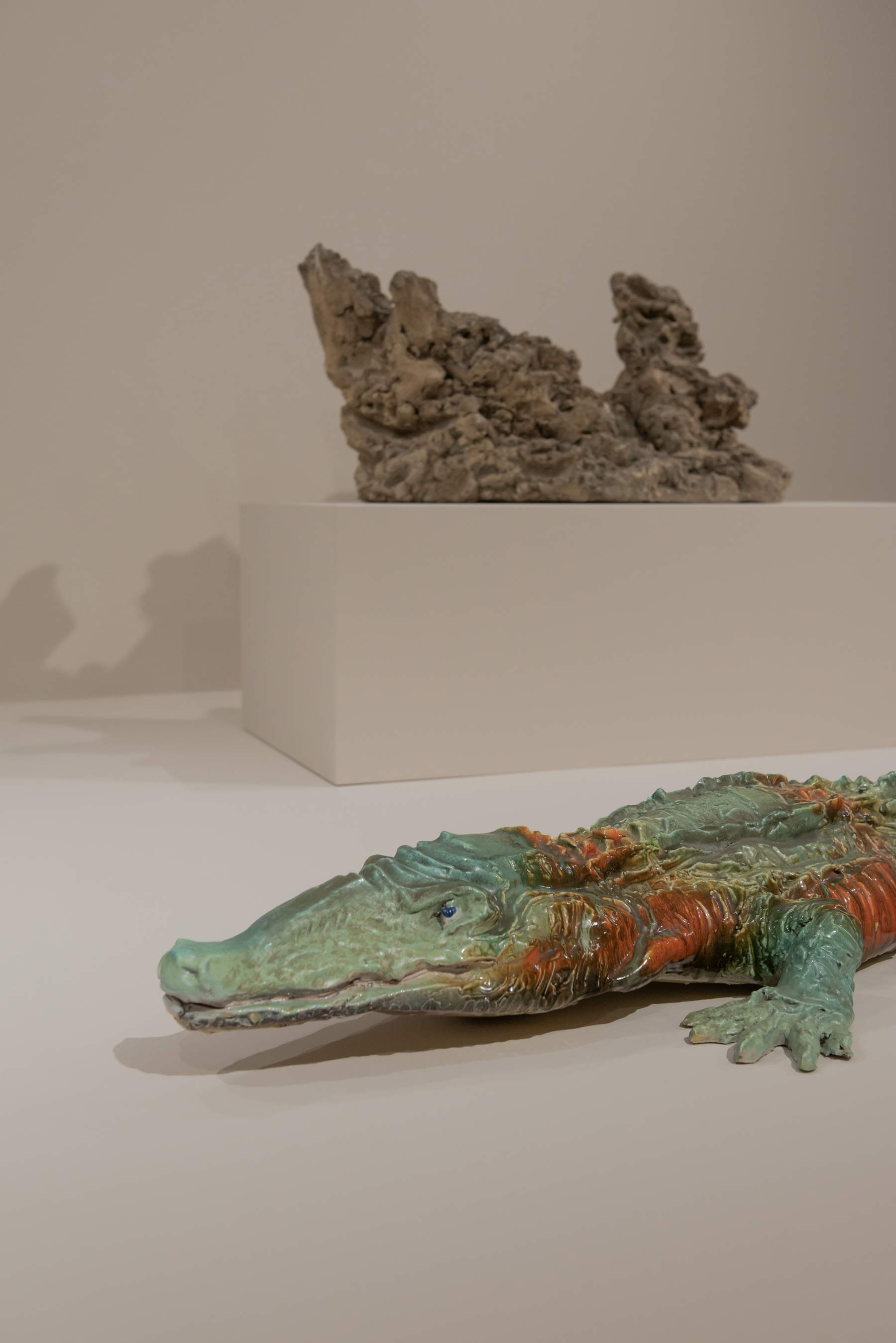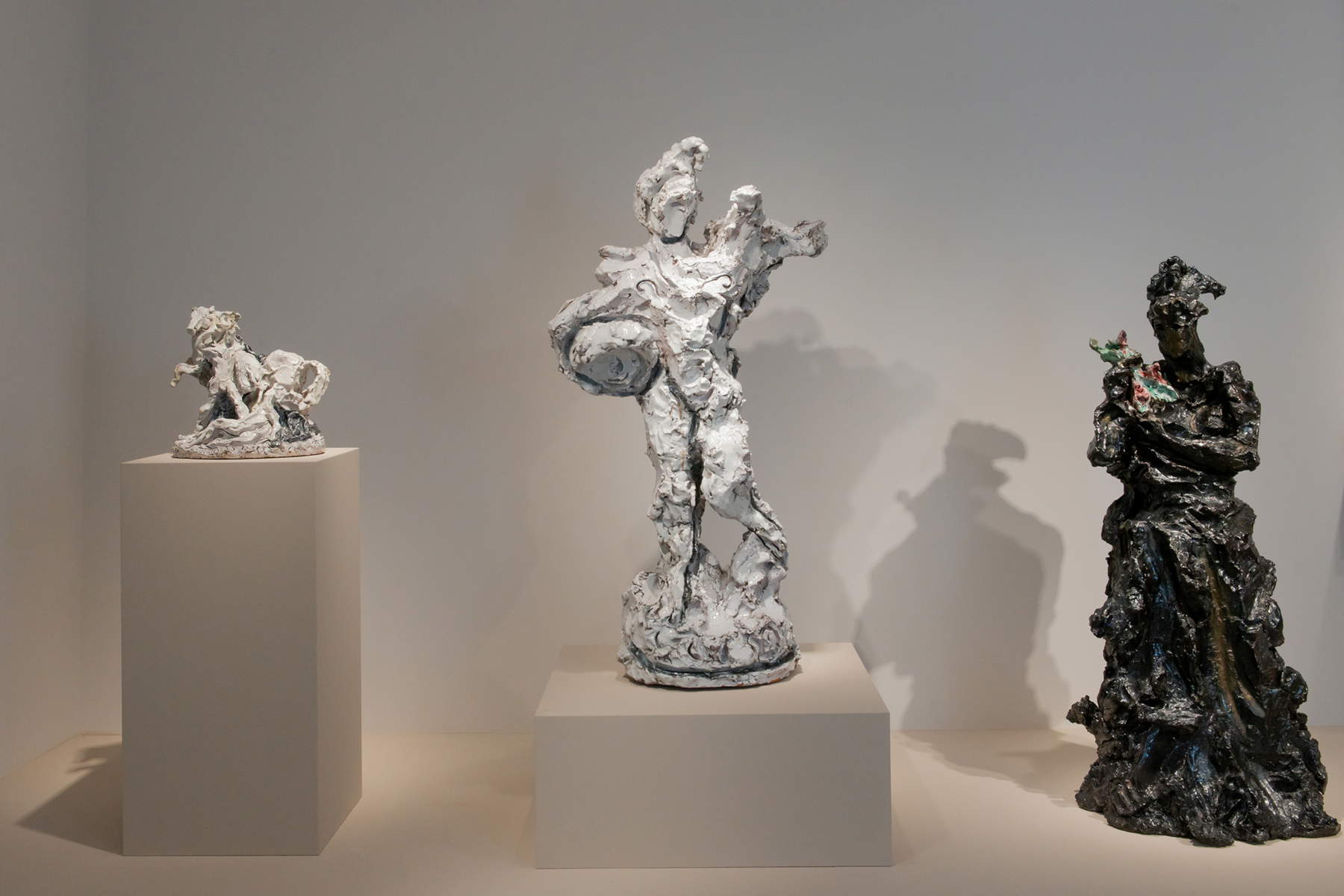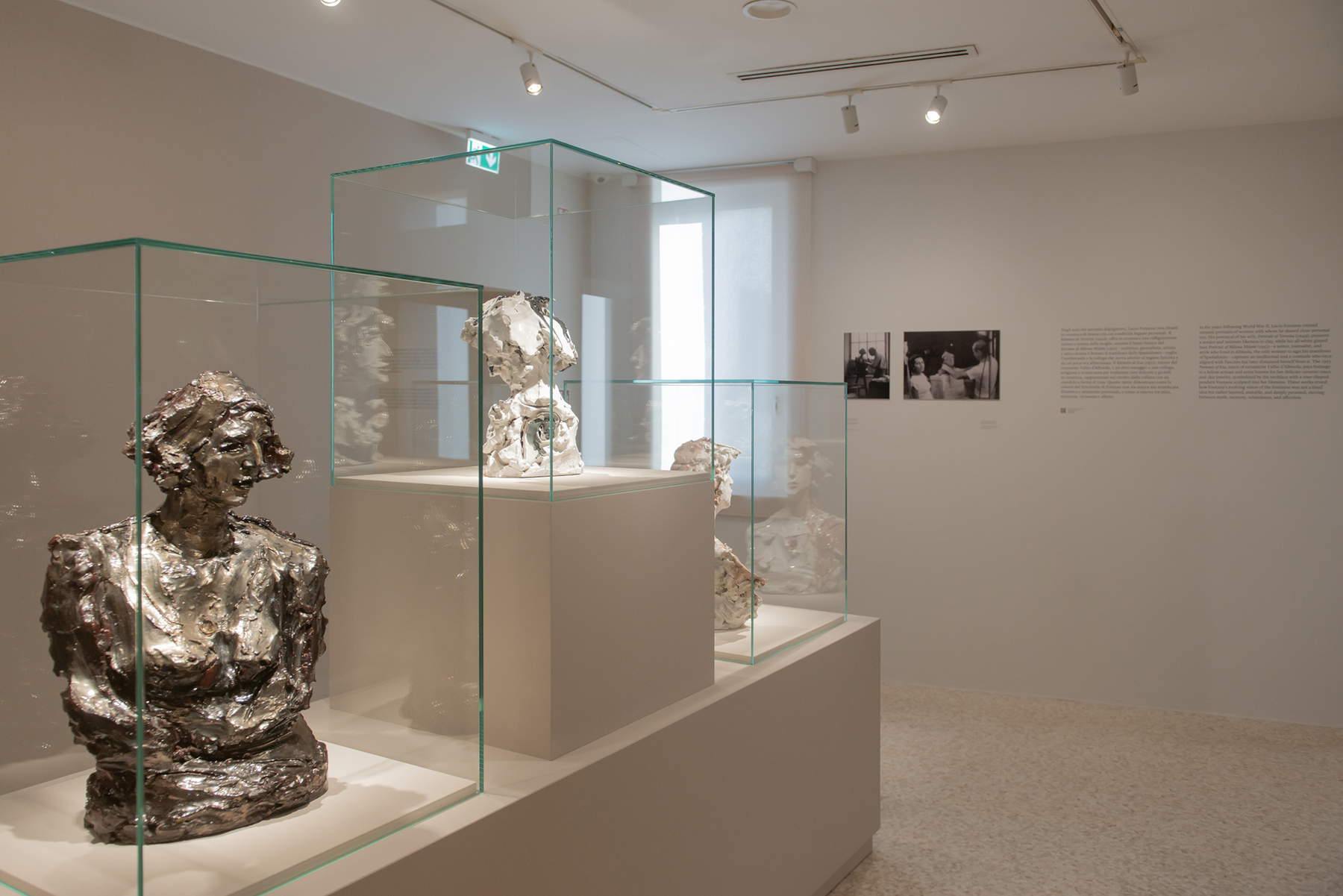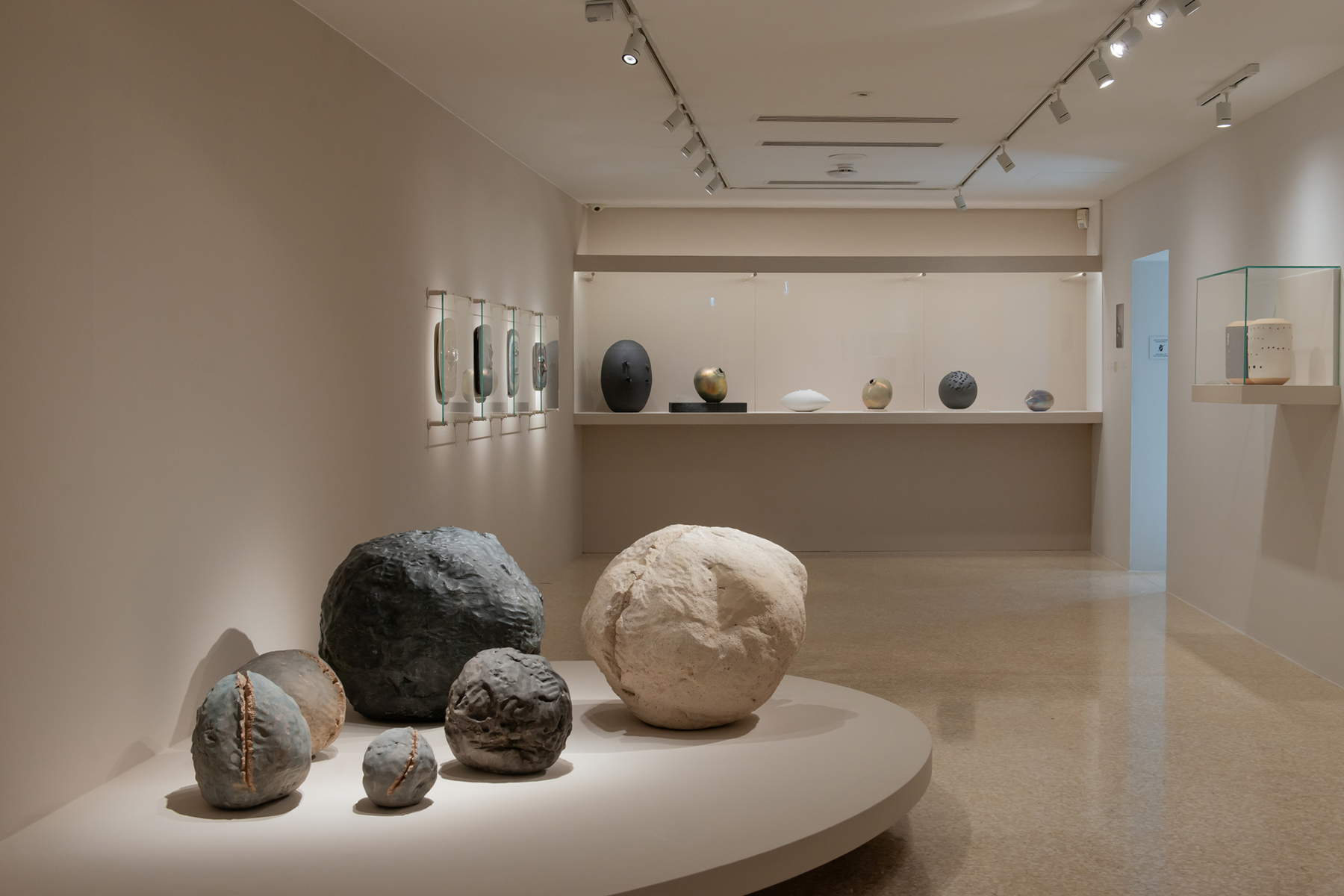From October 11, 2025 to March 2, 2026, the Peggy Guggenheim Collection in Venice will host Mani-Fattura: the Ceramics of Lucio Fontana, the first monographic exhibition in a museum setting entirely devoted to the ceramic production of Lucio Fontana (1899-1968), among the most innovative and irreverent figures of the 20th century. Although the artist is most famous for his Cuts, this exhibition aims to highlight a lesser-known but fundamental aspect of his work: his work with ceramics, begun in Argentina in the 1920s and carried on throughout his life.
Curated by art historian Sharon Hecker, the exhibition aims to be the first monographic exhibition to offer an in-depth analysis of Fontana’s ceramic activity, “long associated,” as the curator explains, “more with craft than art. Today Fontana’s ceramics is receiving new attention thanks to the growing interest in this material in contemporary art.”
With about seventy historical works, some of which have never been exhibited before, from prestigious public and private collections, the exhibition aims to bring out the scope of Fontana’s sculptural vision through his use of clay, revealing how this material was a fertile ground for him to experiment. His ceramic production is distinguished by a variety of forms, techniques and subjects: from female figures, sea animals, harlequins and warriors to abstract sculptures. His approach to clay is based on the recovery of ancient rituals imposed by the material, reinterpreted in an innovative way.
Fontana’s ceramic practice spans different decades and contexts: from his beginnings in Argentina to his return to Italy during Fascism, to his new Argentine sojourn during the war years and his return to postwar Italy at the height of reconstruction and economic boom. The artist also made objects intended for domestic interiors, such as plates, crucifixes, fireplaces, and handles, often in collaboration with important designers. With renowned Milanese architects he then created ceramic friezes and decorations for building facades and sculptures for churches, schools, cinemas, hotels, sports clubs and funerary monuments, works that still grace the city today.
The exhibition includes both unique handmade pieces and mass-produced objects. The exhibition traces Fontana’s ceramic production across two continents and four decades, weaving chronology and sculptural themes into an unprecedented narrative. The heterogeneity of his work, which ranges from figurative to abstract, reflects the diverse historical, social and cultural contexts in which he lived and worked.
The itinerary starts with Dancer of Charleston (1926), a work made upon his return to Argentina after the experience of World War I, which he lived as a young soldier of the “boys of ’99.” From here we move on to Fascist Italy, where in the early 1930s Fontana created small intimate, unglazed and lightly colored terracottas, such as Portrait of a Little Girl (1931) and Female Bust (1931). This was followed by the season of experiments with enamels, made possible by collaboration with artisans in Albisola, from which came such works as Crocodile (1936-37), Medusa (1938-39), Seated Woman (1938) and the monumental Italic Torso (1938).


During World War II, Fontana returned to Argentina, where he continued to work with ceramics, before returning to Italy again after the war. Here, the phase of reconstruction and economic boom is intertwined with a renewed ceramic production that enters into dialogue with the world of design. Fontana creates plates, crucifixes and abstract forms that investigate the very origins of this ancient artistic practice.
A section of the exhibition is devoted to female portraits, evidence of the artist’s intimate bond with the women in his life - from his wife Teresita Rasini to the writer and intellectual Milena Milani, the only woman signatory of the Manifesto of Spatialism, to the ceramicist Esa Mazzotti. The works reveal Fontana’s profound relationship with matter, capable of making visible the material force of clay: smooth, rough, etched, rough, painted, glazed, cut, perforated.
The exhibition also aims to highlight the artist’s ability to fuse art and craft, design and manual dexterity, and includes archival photographs of him at work.
Completing the exhibition is the previously unseen short film Le ceramiche di Lucio Fontana a Milano, commissioned for the occasion from Argentine director Felipe Sanguinetti. Conceived as an integral part of the exhibition, the film accompanies the public on a journey through various Milanese locations-from the Monumental Cemetery to the Gonzaga Institute, from the Prada Foundation to Villa Borsani, from the Church of San Fedele to the Diocesan Museum-where Fontana’s ceramic works made in collaboration with important Italian architects, including Osvaldo Borsani, Roberto Menghi, Mario Righini and Marco Zanuso, are preserved. These are site-specific works integrated into the architectural and urban fabric, reproposed through the evocative images of the film, visible in the spaces in front of the exhibition.
The aim of the exhibition is to invite the public to rediscover the artist not only as a pioneer of Spatialism and conceptual art, but as a sculptor deeply connected to matter, capable of capturing the tactile and expressive potential of clay. New historical, technical and material reflections on what one critic of the time called his “other half” and “second soul” are also offered. The exhibition reveals a more intimate, informal and collaborative side, rooted in the soft physicality of clay and nurtured by enduring ties, such as those with Tullio d’Albisola, a poet and ceramist, and with the Mazzotti factory in Albisola.
The exhibition is accompanied by an illustrated catalog, published by Marsilio Arte, with critical essays by Sharon Hecker, Raffaele Bedarida, Luca Bochicchio, Elena Dellapiana, Aja Martin, Paolo Scrivano and Yasuko Tsuchikane, dedicated to Fontana’s ceramic practice and its historical, social and cultural contexts.
Complementing the project is an articulated program of free collateral activities designed to deepen and reinterpret the artist’s visual language, realized thanks to the support of the Araldi Guinetti Foundation, Vaduz.
Mani-Fattura: the ceramics of Lucio Fontana is realized with the support of Bottega Veneta.
Hours: Daily from 10 a.m. to 6 p.m. Closed Tuesdays.
For info: www.guggenheim-venice.it
Images: © Mani-Fattura: the ceramics of Lucio Fontana, 11.10.2025 - 02.03.2026, Peggy Guggenheim Collection. Photo by Claudia Corrent


 |
| Venice, at the Peggy Guggenheim Collection an exhibition entirely dedicated to the ceramics of Lucio Fontana |
Warning: the translation into English of the original Italian article was created using automatic tools. We undertake to review all articles, but we do not guarantee the total absence of inaccuracies in the translation due to the program. You can find the original by clicking on the ITA button. If you find any mistake,please contact us.